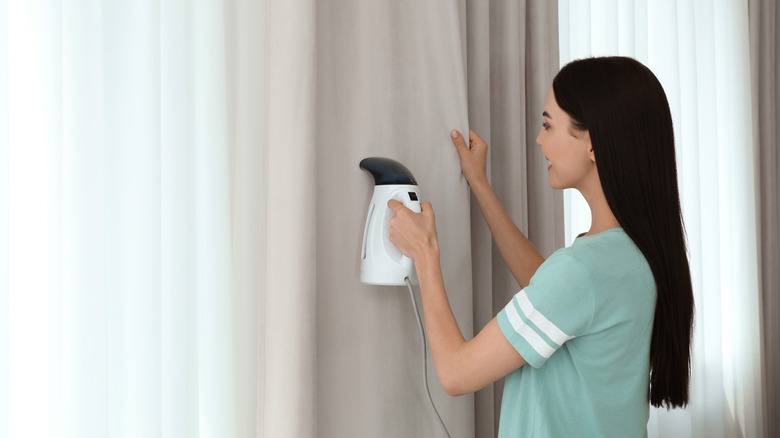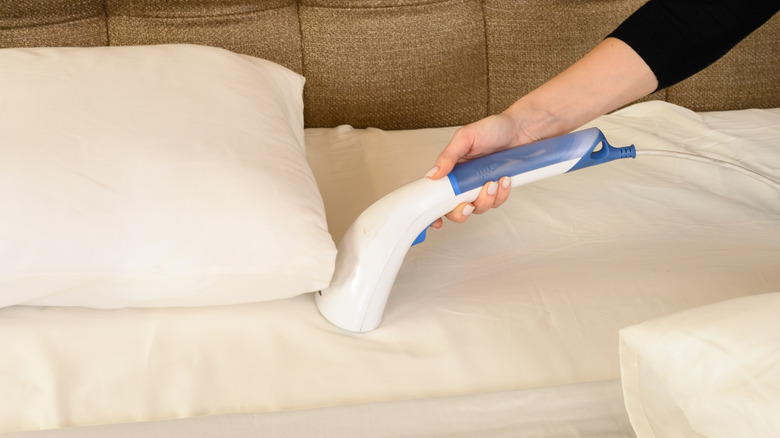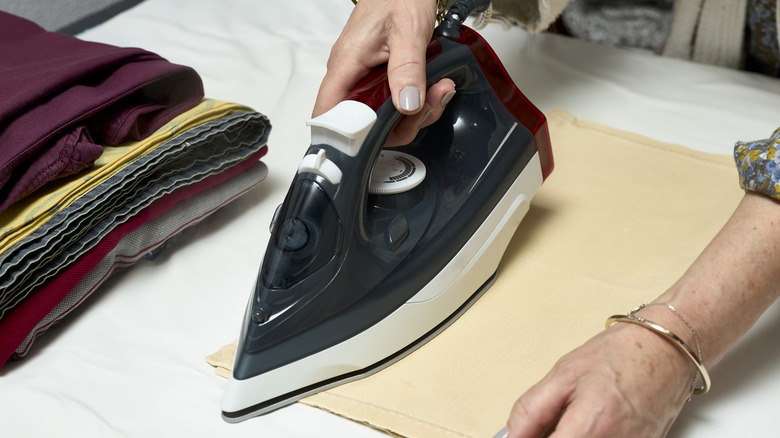How To Choose Between Steaming Or Ironing Your Household Fabrics
If your goal is to keep a tidy household, nothing ruins the vibe like wrinkles in fabric. From new curtains to bed covers that never seem to get folded in a timely or correct manner, the resulting crinkles, bunches, and disorderly folds in material can be quite irksome. Linen and cotton can be particularly daunting fabrics to deal with, especially if you have visions of using fabric napkins at every meal as part of a sustainable lifestyle.
Learning to manage those irritating wrinkles isn't as hard as it might seem though. With some guidance, you can take down those rumples and furrows with either an ordinary iron or a handheld clothing steamer. Yes, the same tools you use to keep your garments looking crisp and fresh can be used on fabrics around the house. However, taking care to learn more about what's best for steaming and what to save for the iron is wise before proceeding.
Fabrics around your home you should steam
Tags on fabric items are your best friend when determining what to steam and what to iron. If they're no longer in place, assessing the fabric by look and feel is necessary. If the material has a delicate hand feel, like silk or chiffon, then the weight of an iron may damage it. Some synthetic fabrics can also melt when ironed. Even the surface of heavier fabrics like velvet or those with light plush textures can be damaged irreparably by the weight and heat of an iron. When in doubt, try steaming first. The reduced heat and light moisture from the steam combined with gentle hand smoothing will often take care of the wrinkles.
Other times steaming is just a matter of convenience. Some great candidates for steaming include curtains of all types. After all, it's hard to iron a curtain, especially a long one, without taking it down and inevitably having the bottom bunch up and become wrinkled again before you're finished with the top. Steaming drapery once it's been hung is a great solution. Many professional decorators and home stagers also steam wrinkles out of comforters and duvets once they're on a bed for the same reason. While we don't know who came up with that trick of the trade, we thankfully applaud their ingenuity.
Fabrics in your home you should be ironing
When it comes to ironing, there are a few things that just need the pressure combined with heat from an iron to make them look crisp and ready for use. Tablecloths and napkins made of linen or cotton definitely fall into this category. For an extra measure of crispness, using a steam iron is the way to go, as mentioned by blogger Come Home for Comfort. Also, don't be afraid to use spray starch on table linens if they've been sitting in a basket awhile before you get around to tending to them.
Household items made of heavy fabrics like denim or canvas, such as pillow covers, usually respond well to ironing, too. Basically, if the fabric is very sturdy and doesn't have texture or pile that might get permanently crushed, you should be able to iron it. Anything that needs to have a pleat or crease refreshed will also require ironing in most instances. When in doubt, check labels for care guidance before you begin.


